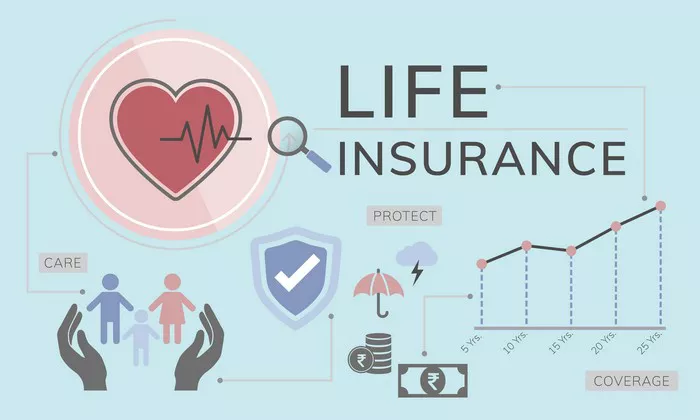Accidental Death and Dismemberment (AD&D) insurance is a specific type of insurance policy designed to provide financial protection in the event of serious injury or death resulting from an accident. While it’s often associated with life insurance, AD&D insurance serves a distinct purpose, offering coverage for accidental events that can lead to death or the loss of certain body parts. This article delves into the details of AD&D insurance, exploring what it covers, how it differs from other types of insurance, and why individuals might consider adding this coverage to their financial planning.
What is Accidental Death and Dismemberment (AD&D) Insurance?
Accidental Death and Dismemberment (AD&D) insurance is a supplemental insurance policy that pays out benefits if the policyholder dies or suffers specific injuries as a result of an accident. Unlike traditional life insurance, which typically covers death from any cause (natural or accidental), AD&D insurance focuses exclusively on accidents.
Coverage and Benefits of AD&D Insurance
1. Accidental Death Coverage
The primary benefit of AD&D insurance is the coverage it provides in the event of accidental death. If the insured dies due to an accident covered by the policy, AD&D insurance pays out a lump sum to the designated beneficiary. Covered accidents often include scenarios like car accidents, falls, drowning, or other unforeseen incidents.
It’s important to note that AD&D insurance does not cover death from natural causes, illness, or suicide. The death must be directly caused by an accident, and there are typically specific exclusions outlined in the policy.
2. Dismemberment Coverage
Another key aspect of AD&D insurance is coverage for dismemberment or loss of certain body parts due to an accident. If the insured loses a limb (such as a hand, foot, arm, or leg) or experiences the loss of eyesight or hearing as a result of a covered accident, the policy pays out a benefit.
The benefit amount varies depending on the severity of the injury and the specific terms of the policy. For example, losing one hand might result in a different payout than losing both hands.
3. Additional Benefits for Specific Injuries
In addition to covering accidental death and dismemberment, some AD&D policies offer benefits for other injuries that result in specific outcomes, such as paralysis, severe burns, or coma. These benefits can provide financial assistance to help cover medical expenses, rehabilitation costs, or other financial needs resulting from a covered injury.
4. 24/7 Coverage Worldwide
AD&D insurance typically provides coverage 24/7, regardless of location. This means the insured is covered whether they are at home, work, or traveling internationally. Accidents can happen anytime and anywhere, and AD&D insurance offers a layer of financial protection for unforeseen events.
How Does AD&D Insurance Differ from Life Insurance?
It’s important to understand the distinctions between AD&D insurance and traditional life insurance:
1. Coverage Scope: AD&D insurance covers only accidental death and specific accidental injuries, whereas life insurance covers death from any cause (including illness or natural causes).
2. Benefit Payout: AD&D insurance pays out a benefit only if the insured’s death or injury is a direct result of an accident covered by the policy. Life insurance pays out regardless of the cause of death, as long as premiums are up to date.
3. Cost: AD&D insurance is generally more affordable than life insurance because it covers a narrower range of risks.
Who Should Consider AD&D Insurance?
AD&D insurance can be a valuable addition to someone’s financial planning strategy, especially for individuals in certain situations:
1. High-Risk Professions: People working in high-risk occupations (such as construction, mining, or law enforcement) may find AD&D insurance particularly beneficial due to the increased risk of accidents.
2. Active Individuals: Those who engage in high-risk activities like extreme sports or frequent travel may also benefit from AD&D insurance to supplement their coverage.
3. Complementary Coverage: AD&D insurance can complement existing life insurance policies, providing additional coverage for accidental death and injuries.
Understanding Policy Exclusions
Like any insurance policy, AD&D insurance comes with exclusions and limitations. It’s crucial to review the policy terms carefully to understand what is covered and what is not. Common exclusions may include:
Intentional Self-Inflicted Injuries: AD&D insurance does not cover injuries or deaths resulting from self-harm or suicide.
Certain High-Risk Activities: Some policies may exclude coverage for injuries sustained during specific high-risk activities, such as skydiving or participating in professional sports.
Alcohol or Drug-Related Incidents: Accidents caused by the influence of alcohol or drugs may not be covered.
Conclusion
Accidental Death and Dismemberment (AD&D) insurance offers valuable financial protection in the event of accidental death or serious injury. While it does not replace traditional life insurance, AD&D insurance can be a cost-effective way to supplement coverage, particularly for individuals exposed to higher risks due to their occupation or lifestyle.
Before purchasing AD&D insurance, it’s advisable to compare policies, understand the coverage limits, and assess individual needs. Consulting with an insurance professional can help clarify options and ensure the chosen policy aligns with specific financial goals and risk factors. By understanding what AD&D insurance covers and how it differs from other types of insurance, individuals can make informed decisions to protect themselves and their loved ones from the financial impact of unforeseen accidents.


